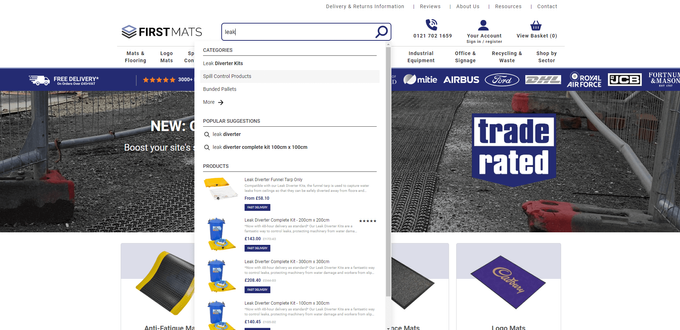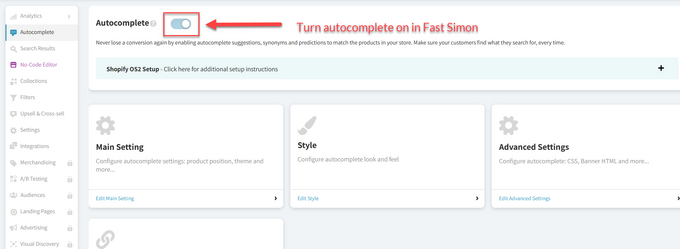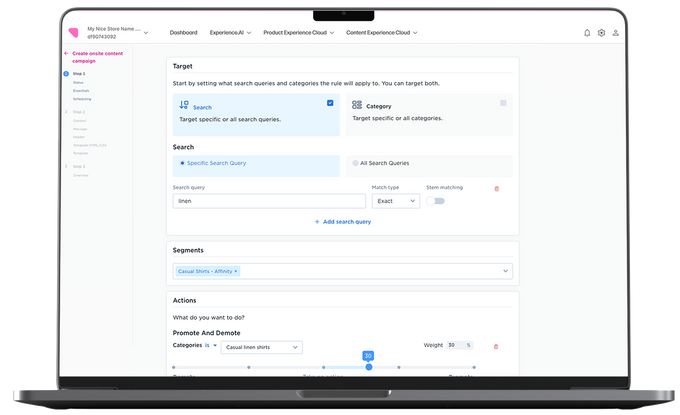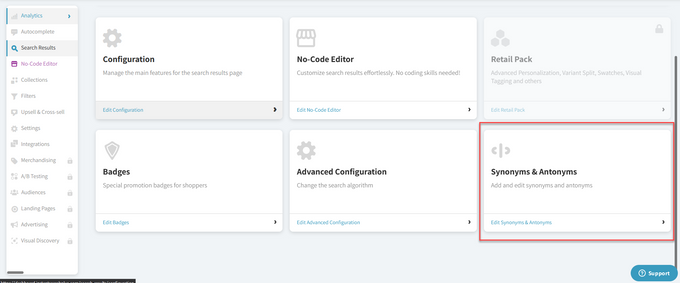7 Ways Site Search Optimization Can Increase Your Conversion Rate
Tailoring search results to individual user preferences and behavior through personalization is a surefire way to improve relevance and drive more sales.
Updated November 19, 2024.

Did you know that customers who use the internal search bar on a website are 4-6 times more likely to convert and make up almost 30% of site visitors?
When you enhance your site search functionality, you cater to these high-intent customers, making it easier for them to find what they want. This streamlined shopping experience can significantly maximize sales, and here are the top 7 reasons why.
Meet the Expert
Jameela Ghann is a seasoned online store owner with over a decade of eCommerce experience. Apart from running Alora Boutique, she's also the marketing manager for Fera Product Reviews.
1. Boosted Product Discovery
When search results are accurate and relevant, customers can find what they're looking for more easily and are more likely to purchase rather than leave for a competitor's site. eCommerce platforms like Shopify, Magento, or WooCommerce offer built-in search features or plugins to improve product discovery in your online store.
The impact of improving site search can be seen with First Mats, who capitalized on user intent by prioritizing an efficient search experience that caters to high-intent shoppers, driving conversions and revenue. Their strategic marketing director, Richard O'Connor, found that focusing on high search intent, an improved user experience (UX), and targeted product discovery led to impressive results.
Additionally, solutions like the FastSimon Product Finder provide user-friendly interfaces to manage and optimize product searches without coding expertise, even within the top eCommerce platforms like Shopify and WooCommerce.
» Explore more advantages of using an on-site search engine
2. Increased User Engagement
Autocomplete predictions and product filters are crucial aspects of any effective search function. Autocomplete guides users through their search with less effort, while filters allow them to narrow down results based on size, color, price range, etc.
Providing an interactive browsing experience can increase user engagement, which, in turn, can boost conversions.
Personalization platforms like Nosto , InstantSearch+, and Fast Simon can help analyze user behavior to tailor search results and recommendations by offering autocomplete with visual product suggestions
» Find out how to add product filters to Shopify and avoid common mistakes
3. Personalized Search Results
Personalized search results increase relevance by tailoring the experience to each user's preferences and behavior. Doing so can craft a unique shopping experience for each visitor
For example, if you run an online book store and notice that a particular user frequently purchases sci-fi novels, prioritizing the latest releases in that genre with effective merchandising for this customer can lead to more sales.
» Learn more about creating personalized product recommendations
4. Real-Time Adaptation
Imagine a user searching for gifts on your site while consistently clicking on eco-friendly products. With real-time adaptation, your on-site search engine would dynamically prioritize those products in their search results, ensuring a highly personalized customer experience.
It is important to have a search software solution that dynamically updates search results based on real-time data to achieve this level of agility. Such a search engine can adjust the products shown by analyzing:
- Trends
- User actions
- Inventory levels
With intuitive dashboards, you can set rules based on these factors, making it easier to manage without deep technical know-how.
5. Synonyms and Natural Language Processing (NLP)
Have you ever searched for a "couch" on an eCommerce site, only to not find what you're looking for because their products are listed as "sofas"? This disconnect between customer language and product terminology can be a conversion killer because not all shoppers use the exact terms that match your product descriptions or titles.
Natural language search helps your search engine understand natural language variations and recognize synonyms and spelling mistakes, helping to ensure that your site search results cater to how real people speak and think.
This inclusivity in language comprehension greatly enhances product discovery, making users more likely to convert because they can effortlessly locate what they need, regardless of their terminology.
» Learn to effectively optimize your website content with natural language search
6. Enhances Mobile Search Experience
With increasing shopping done on mobile devices, optimizing the mobile search experience is no longer an option—it's a necessity. This means ensuring your search function has the following features:
- Easy to use and see on small screens
- Fast-loading results
- Touch-friendly interface
A mobile-optimized search experience increases user engagement and conversion rates by providing easy and efficient mobile shopping to prevent customers from leaving due to too much friction or other difficulties.
While optimizing for mobile may seem daunting, many eCommerce platforms offer mobile-responsive themes that include optimized search functionalities. Additionally, apps Tapcart and Ven Apps can help you design and launch a mobile app from your Shopify store, while Tekglide can improve your store's mobile responsiveness.
7. Enables Visual Search Capabilities
Visual search allows users to upload an image of what they're looking for, and your search engine can show similar items from your catalog. Your store needs visual discovery because it taps into the user's desire for quick, effortless shopping experiences, especially when they can't describe what they want in words.
By leveraging visual cues such as color, size, and type directly for product discovery, visual search can shorten the path to purchase, ultimately improving conversion rates.
While implementing visual search may sound complex, platforms like ViSenze make it manageable, even for those without extensive technical expertise.
» Here's how to implement visual search with Fast Simon
Optimize Your Site Search, Optimize Your Conversion Rate
Optimizing your site's search function isn't a one-time task—it involves continuous auditing, refining, and testing. Consistent improvement through A/B testing, personalization based on customer behavior, and adapting to evolving needs is a necessity.
Prioritizing a frictionless, engaging search experience tailored to customer needs can turn searchers into loyal customers. However, you should always remember to balance personalization with user privacy and avoid potential biases to build trust and long-term relationships.










